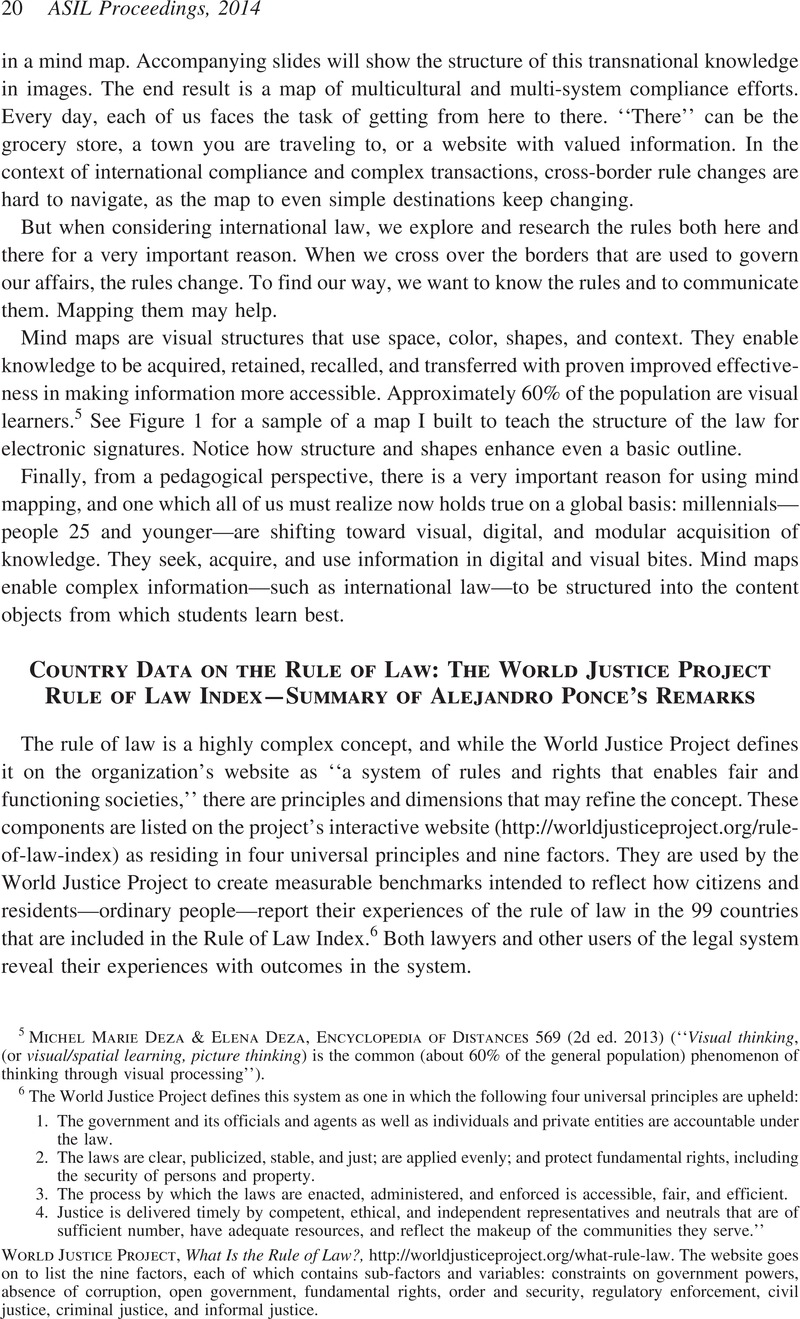No CrossRef data available.
Article contents
Country Data on the Rule of Law: The World Justice Project Rule of Law Index—Summary of Alejandro Ponce’s Remarks
Published online by Cambridge University Press: 20 January 2017
Abstract

- Type
- Connecting the Dots: Visualizing International Law
- Information
- Copyright
- Copyright © American Society of International Law 2015
References
6 The World Justice Project defines this system as one in which the following four universal principles are upheld:
-
1.
1. The government and its officials and agents as well as individuals and private entities are accountable under the law.
-
2.
2. The laws are clear, publicized, stable, and just; are applied evenly; and protect fundamental rights, including the security of persons and property.
-
3.
3. The process by which the laws are enacted, administered, and enforced is accessible, fair, and efficient.
-
4.
4. Justice is delivered timely by competent, ethical, and independent representatives and neutrals that are of sufficient number, have adequate resources, and reflect the makeup of the communities they serve.”
World Justice Project, What Is the Rule of Law?, http://worldjusticeproject.org/what-rule-law. The website goes on to list the nine factors, each of which contains sub-factors and variables: constraints on government powers, absence of corruption, open government, fundamental rights, order and security, regulatory enforcement, civil justice, criminal justice, and informal justice.




